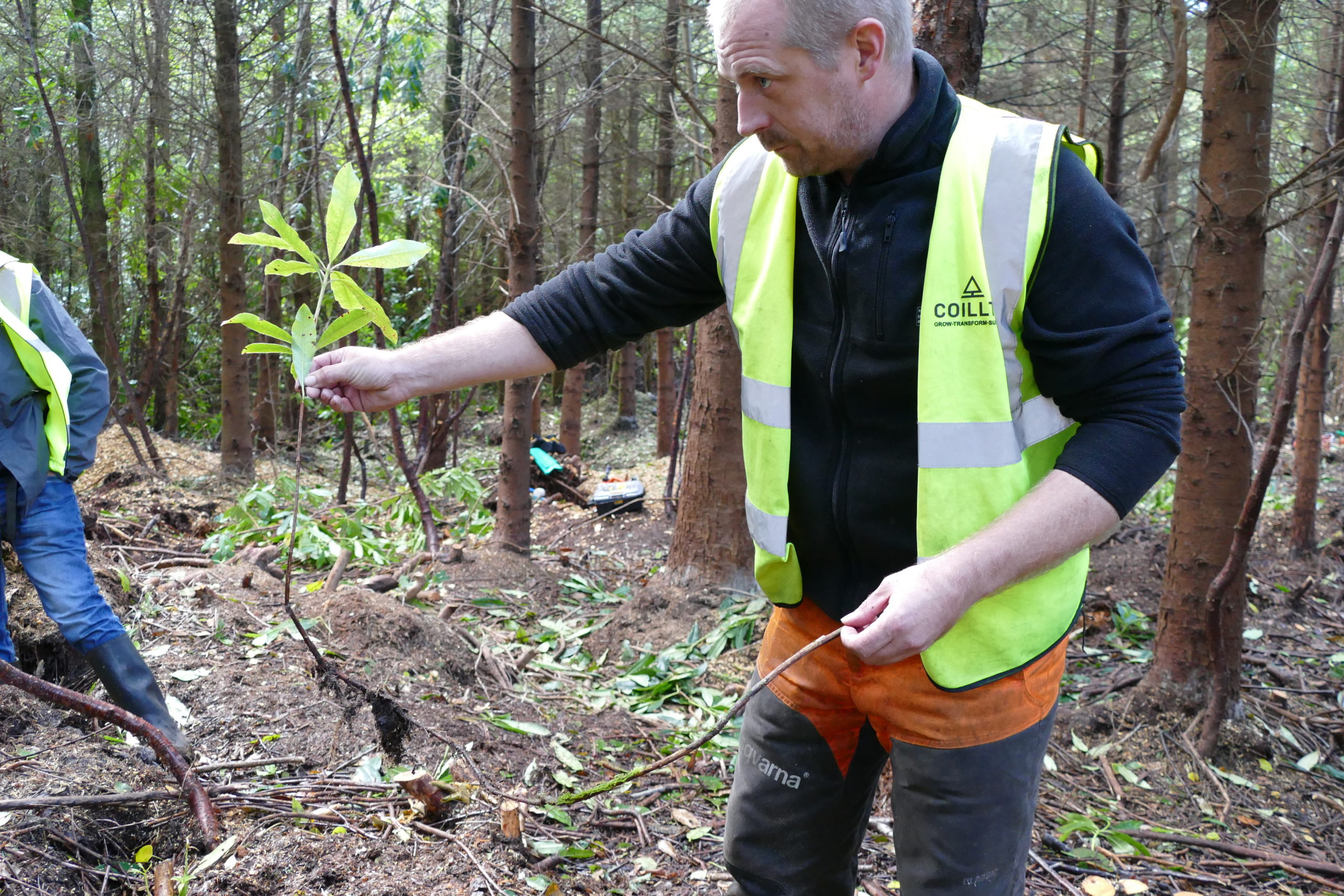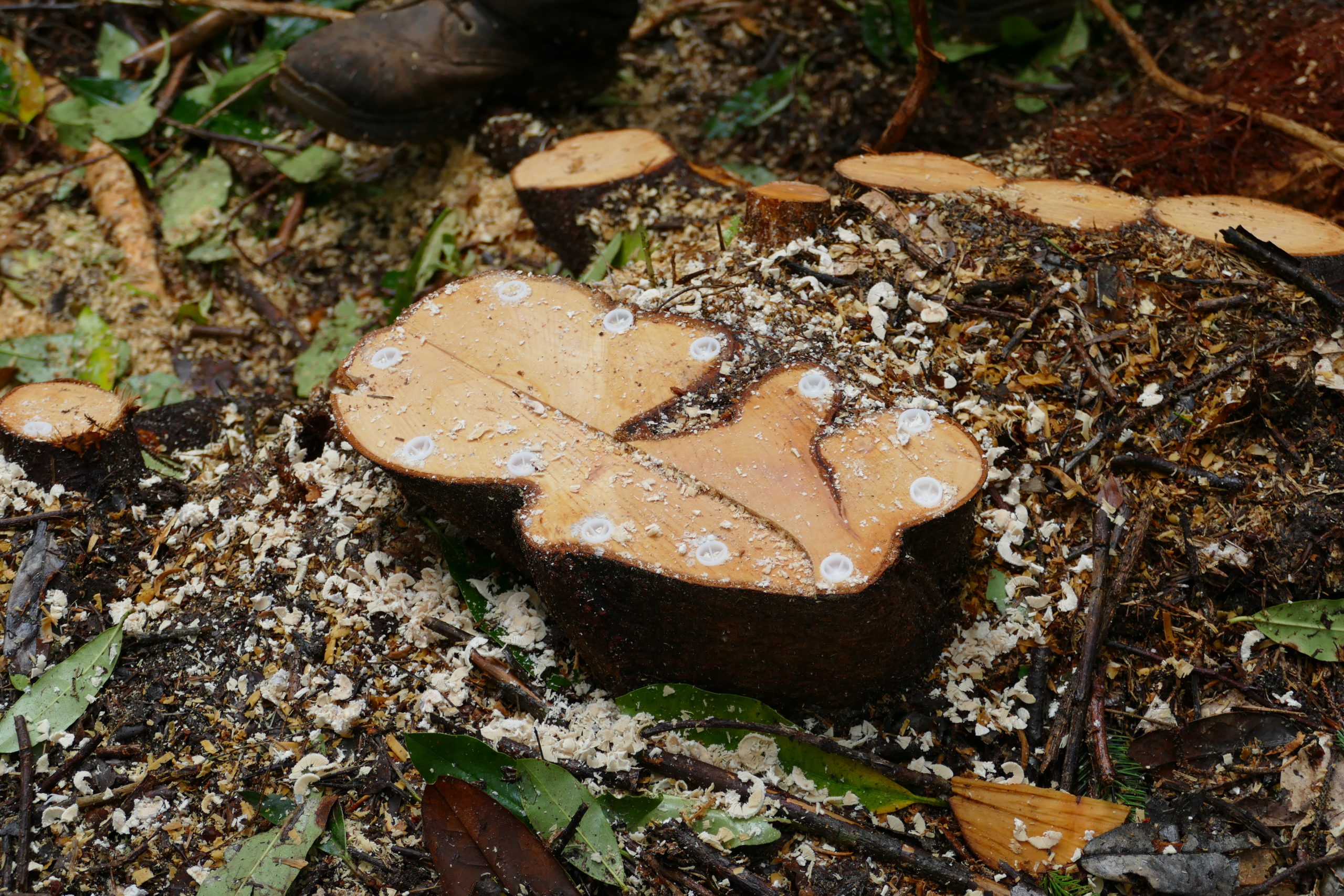2020 Progress: Restoring Hazelwood
Coillte Nature's ecologist, Dr Declan Little, takes us through the work undertaken in 2020 to restore Hazelwood's alluvial woodlands
When I heard that Coillte had identified Hazelwood’s alluvial forest as a priority for restoration at the National Biodiversity Conference in 2019, I was immediately struck by the merit of selecting this woodland.
Alluvial native woodlands are Ireland’s rarest native woodland type and Hazelwood almost certainly has ‘Ancient woodland’ fragments that have survived for
at least four hundred years, if not longer. This does not mean that the trees are four hundred years old (clearly, they are not), but there would appear to be uninterrupted woodland habitat continuity in parts of the woodland for centuries. This means that the site has very high biodiversity value, since it contains flora and fauna that have survived in a complex woodland community.


The biodiversity here is unique, but the flooded woodland is challenging to work in
As such, Hazelwood ranks very highly in terms of its unique biodiversity value on a national and European scale and is considered one of the ’Jewels in the Crown’ of Ireland’s native woodland resource. The iconic Hazelwood - put on the map by W.B. Yeats through his poetry and association with the nearby Lake Isle of Inishfree - is part of a wider native oak-dominated woodland area around the shores of Lough Gill.
Our first task was to draw up an outline plan for the site and a schedule for its implementation. A visit to the site by the Coillte Nature team and staff from the Coillte Business Area Unit took place last January, and the first notable feature was the ‘alluvial’ or ‘riverine’ nature of the woodland. Weeks of continual winter rains meant the woodland was submerged in flood waters in many parts but especially immediately adjacent to the Garavogue River. It reminded me of the Everglades in Florida and all that was missing were the alligators, crocodiles and mosquitoes!
Though we all wore wellingtons, some of the paths were almost impassable and waders would have been more appropriate. To see the site under water like this gave us plenty to think about for future management operations, especially the logistics and methods of removing the thickets of rhododendron and Cherry laurel that have infested the woodland over many years.


The invasive rhododendron is up to seven metres tall
Some areas are so badly infested with both that it is impossible to get through the impenetrable jungle of tangled thickets, some of which are up to seven metres tall. In places, they completely obliterate and replace the native shrub and field layers as the sunlight cannot reach the forest floor. This also prevents regeneration of oak, ash, birch, rowan and all the other trees and shrubs, thereby compromising the very future of the woodland.
Clearly the most immediate and urgent task is to remove and control both these insidious threats to the medium and long term survival of this unique woodland ecosystem. We know this is possible, thanks to a previous EU Life Nature project that was implemented here a decade ago, successfully removed these pernicious and unwanted guests in over half the area beside the river.


We replaced adjacent conifer plantation with new native woodland
As we left the site we noticed an area recently clearfelled of Sitka spruce adjacent to the Alluvial woodland and subsequently secured agreement from the Forest Service to replant this area of just over four hectares with a native woodland community appropriate to the soil and site conditions. In April, this was planted with birch, alder, Scots pine, rowan, willow and holly. Similarly, there are stands of conifers and non-native invasive trees in the alluvial woodland that require removal and management, some under Continuous Cover Forestry (CCF), and that will be addressed in the next few years.
As the site is designated as a Special Area of Conservation (SAC) under the EU Habitats Directive and a National Heritage Area (NHA) under the Wildlife Act,
it was imperative to address the conservation objectives and operational measures mentioned above through consultation and agreement with the statutory authority responsible for the implementation of conservation and biodiversity legislation, i.e. the National Parks and Wildlife Service (NPWS).
A number of ecological studies were completed to ensure best practice
Also, as the Garavogue River is an important habitat for otter, kingfisher, salmon, sea trout and brown trout, it was important to consult with Inland Fisheries Ireland and seek to get as much input from both statutory agencies in order to maximise conservation efforts with minimal site impacts on the woodland itself and on the adjacent Garavogue River.
Though this may sound obvious, there are considerable challenges in controlling rhododendron and laurel on such a sensitive site that is liable to frequent flooding, including the prevention of soil compaction, silt run-off and the application of herbicides to prevent regeneration and reinvasion of invasive species. In March, an on-site meeting took place with local and regional NPWS staff to discuss how conservation objectives would be achieved.
It was agreed to develop a ‘Natura Conservation Management Statement’ in parallel with Appropriate Assessment Screening and a detailed Biodiversity Management Plan for the entire site. Effectively, an Ecological Impact Report was prepared detailing the operations required and how they would be carried out sensitively. These reports were prepared by a consultant ecologist and forester with considerable previous experience of native woodland management planning. After the reports were completed and assessed and approved by NPWS and IFI, a tender to carry out the work was advertised.




Work to clear the invasive species commenced in late summer
Invasive species clearance work commenced in late August and ceased in early November when weather conditions conspired against the contractor as site conditions became too wet to operate. A novel and effective site-sensitive approach to controlling the regrowth of rhododendron and laurel from cut stumps in this project is the use of ‘Ecoplugs’, which are capsules of glyphosate that are inserted into holes drilled into the cut stems. This not only targets the herbicide directly where its required, but also prevents runoff of the chemical into the nearby river and streams.
The cut stems are chipped on site and care is taken to avoid soil compaction through the use of low-impact machinery and to cease operations during very wet weather. Work will recommence next spring and it is expected that full engagement and consultation with all of our stakeholders there will occur once Covid restrictions are lifted.
This is particularly relevant regarding plans to improve recreational pathways and signage. We are aware that this is a very popular recreation woodland for the people of Sligo and its surroundings, and would ask for patience while this work is ongoing as it is slow and meticulous, often requiring pathways to be temporarily closed until operations are completed. The result will be a better recreational experience and a healthier, vibrant woodland.
Find out more about Coillte Nature's work in our End of Year Report


